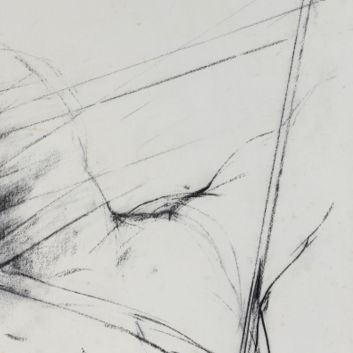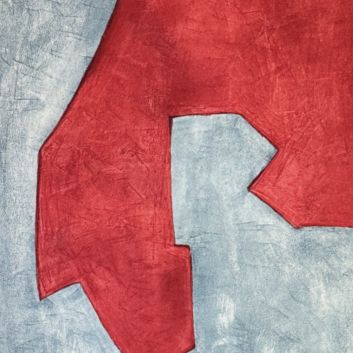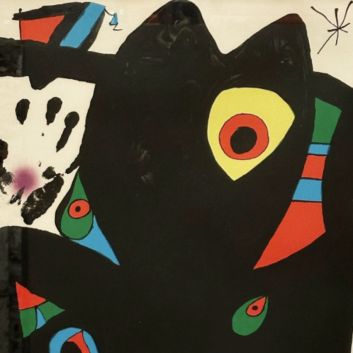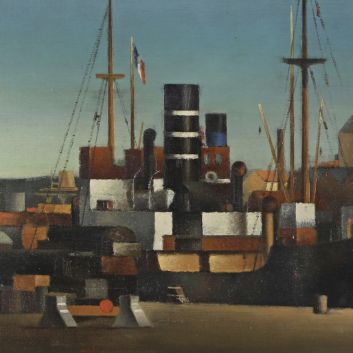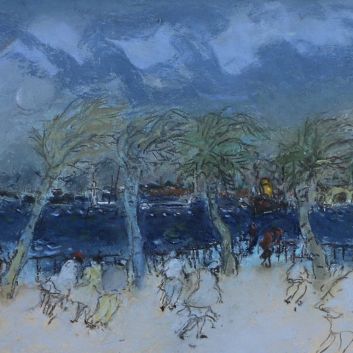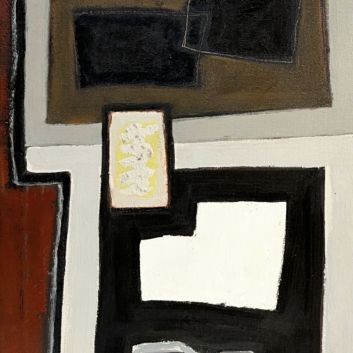Rating and value of Joan Miro lithographs, paintings and sculptures
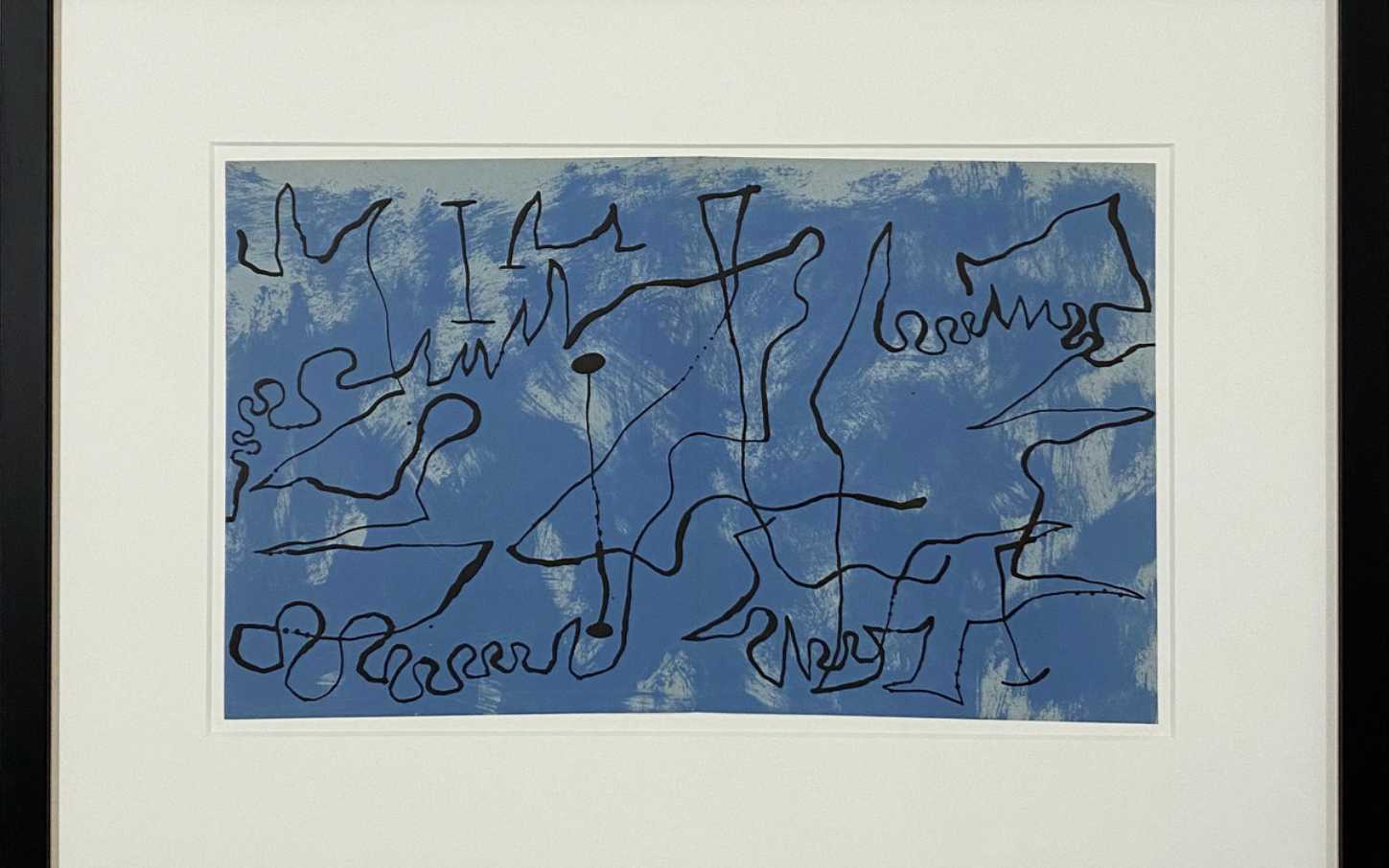
If you own a work by or based on the artist Joan Miro and would like to know its value, our state-approved experts and auctioneers can help you.
Our specialists will carry out a free appraisal of your work, and provide you with a precise estimate of its current market value.
Then, if you want to sell your work, we'll point you in the right direction to get the best possible price for it.
Artist's rating and value
Thanks to his popularity, Lucio Fontana's value on the art market is high and stable. Highly coveted by collectors, his futuristic paintings can fetch thousands of euros at auction.
The price at which they sell on the auction market ranges from €10 to €26,042,000, a substantial delta but one that speaks volumes about the value that can be attributed to the artist's works.
His lithograph Homenatge à Jean Prats, dated 2022, sold for €137,630 in 2022, a substantial sum for a lithograph.
Order of value from the most basic to the most prestigious
Technique used | Results |
|---|---|
Lithography | From €10 to €137,630 |
Ceramics | From €10 to €450,000 |
Sculpture - volume | From €120 to €10,692,000 |
Drawing - watercolor | From €80 to €24,751,000 |
Paint | From €50 to €26,042,000 |
Response in less than 24h
The artist's works and style
In the first half of the 20th century, a new pictorial language developed under the impetus of Joan Miró. Although often associated with Surrealism, this Catalan artist went beyond the boundaries of this movement to create a style all his own.
Miró stands out for his mastery of simple, almost childlike forms, which he combines with bright, often primary colors, giving his works an inimitable vitality.
Indeed, Joan Miró was not content to follow the codes of Surrealism. He appropriated the concepts of dreams and the unconscious, reinterpreting them through refined compositions, as seen in his painting "Le Carnaval d'Arlequin" (Harlequin's Carnival).
With this work, he established himself as a pioneer of a surrealism with poetic and colorful accents, where abstraction and figuration respond to each other without ever clashing.
Miró's technique is based on a constant quest for experimentation. From the 1920s onwards, he moved away from traditional painting to explore other media such as ceramics and sculpture.
This diversity of approaches testifies to his desire to push back the boundaries of art, while remaining faithful to a quest for spontaneity and simplicity in form and color.
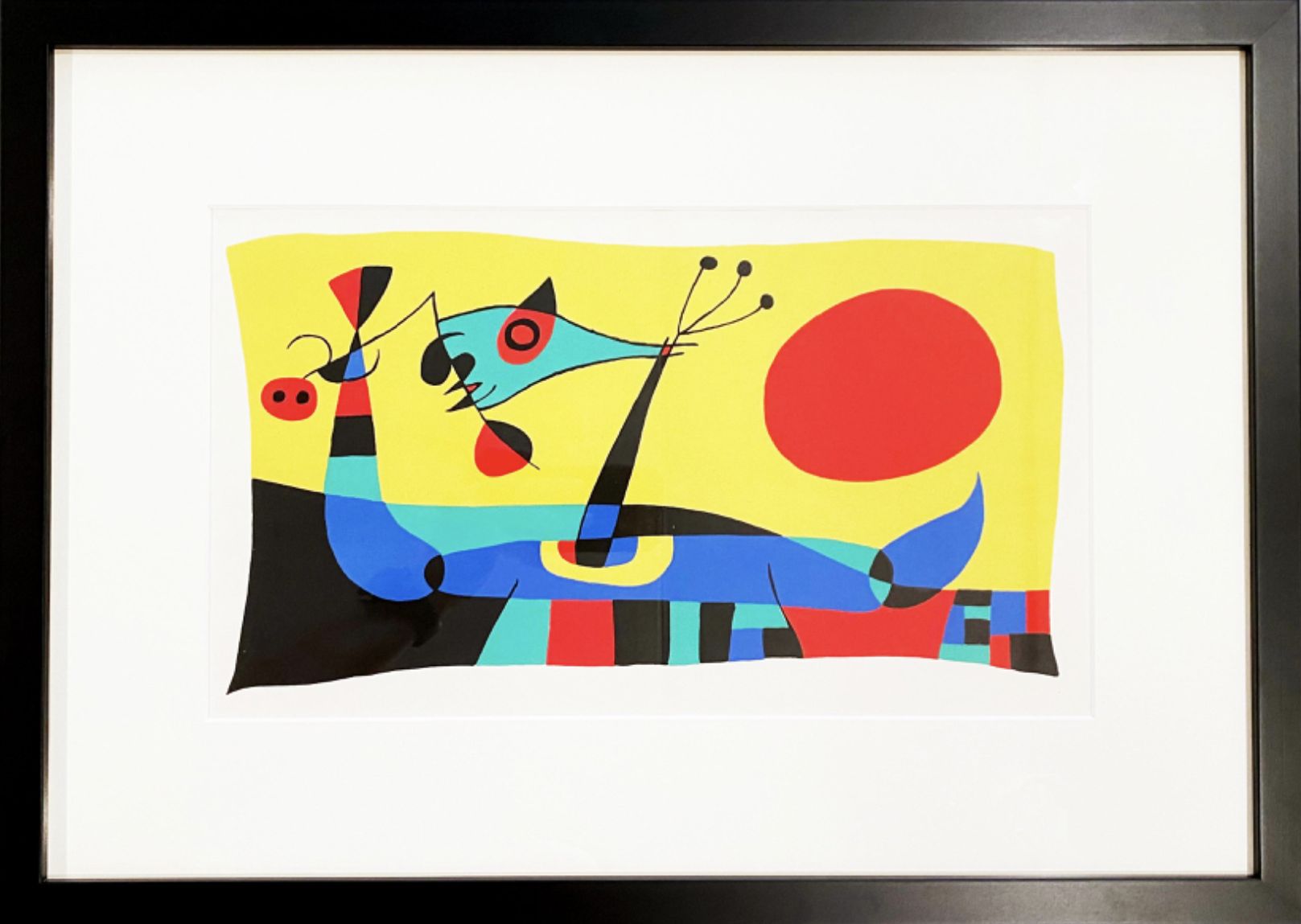
Miro's surrealism and abstraction
In the first half of the 20th century, a Catalan artist imposed a radically new style: Joan Miró. Many artists gravitated towards Surrealism at this time: Salvador Dalí was one of its most emblematic figures, but another artist, Miró, stood out from the crowd.
Indeed, Miró produced many Surrealist works during his career, and is still considered one of the masters of this movement. However, he was to become a precursor of several other currents.
Firstly, abstract expressionism, and secondly lyrical abstraction, two movements that fed off Miró's experiments.
Surrealism, which emerged in the 1920s, encompasses a wide range of techniques and styles, from automatic painting to the exploration of dreams and the unconscious.
This diversity reflects Miró's desire to go beyond academic conventions, a goal he fully shared. He uses simple forms and vivid colors to express a deeply poetic and imaginative vision of the world.
Although Miró has traditionally been associated with Surrealism, his style freed itself early on from strict classification.
In his painting Le Carnaval d'Arlequin (Harlequin's Carnival), dating from 1924, we can already easily make out a dreamlike universe where abstract forms come to life in a colorful dance, defying all rational logic.
Shapes and compositions were also turned upside down and totally rethought. All these aspects of his work make Miró one of the pioneers of abstraction.
l repeated his experiments in later works such as La Ferme (1921-1922), where pictorial space was revisited in an even more radical way, with objects floating freely on the canvas.
Nevertheless, the first phase of Abstract Expressionism (that influenced by Miró) is thought to have begun in the 1940s.
Artists such as Jackson Pollock and Arshile Gorky knew how to use the milestones set by Miró. They, in turn, wanted to free painting from the constraints of reality, while integrating a more spontaneous, instinctive gesture.
The creative process is transformed into an act of liberation, and artists deconstruct in order to rebuild. This is what leads to lyrical abstraction, a movement in which line and color become direct expressions of emotion and freedom, a direct legacy of Joan Miró's innovations.
10 unusual facts about Joan Miro
The life of Joan Miro
Joan Miró was born in Barcelona in 1893 into a family of jewelers and watchmakers, where arts and crafts played an important role. His father, Miquel Miró, encouraged his artistic education from an early age.
Miró initially entered the Barcelona School of Fine Arts, but his career took a decisive turn when he gave up a job in commerce after a severe depression to devote himself entirely to painting.
In 1919, he made his first trip to Paris, where he met artists such as Pablo Picasso and André Masson. Influenced by Dadaism and Surrealism, Miró forged a unique style marked by poetic spontaneity.
In 1921, he painted La Ferme, a work that illustrates his attachment to the landscapes of his native Catalonia. At the same time, he began to explore other media, notably engraving and sculpture.
During the Spanish Civil War, Miró left Spain for Paris, but was confronted with the rise of Nazism and eventually returned to Spain under Franco's regime. He settled in Majorca, where he experimented with ceramics and monumental frescoes.
In 1954, he received the Grand Prix for engraving at the Venice Biennale, marking his international recognition.
In 1975, he inaugurated the Joan Miró Foundation in Barcelona, dedicated to the promotion of contemporary art. Miró died in 1983 at the age of 90, after a life dedicated to creation and the ceaseless exploration of shapes and colors.
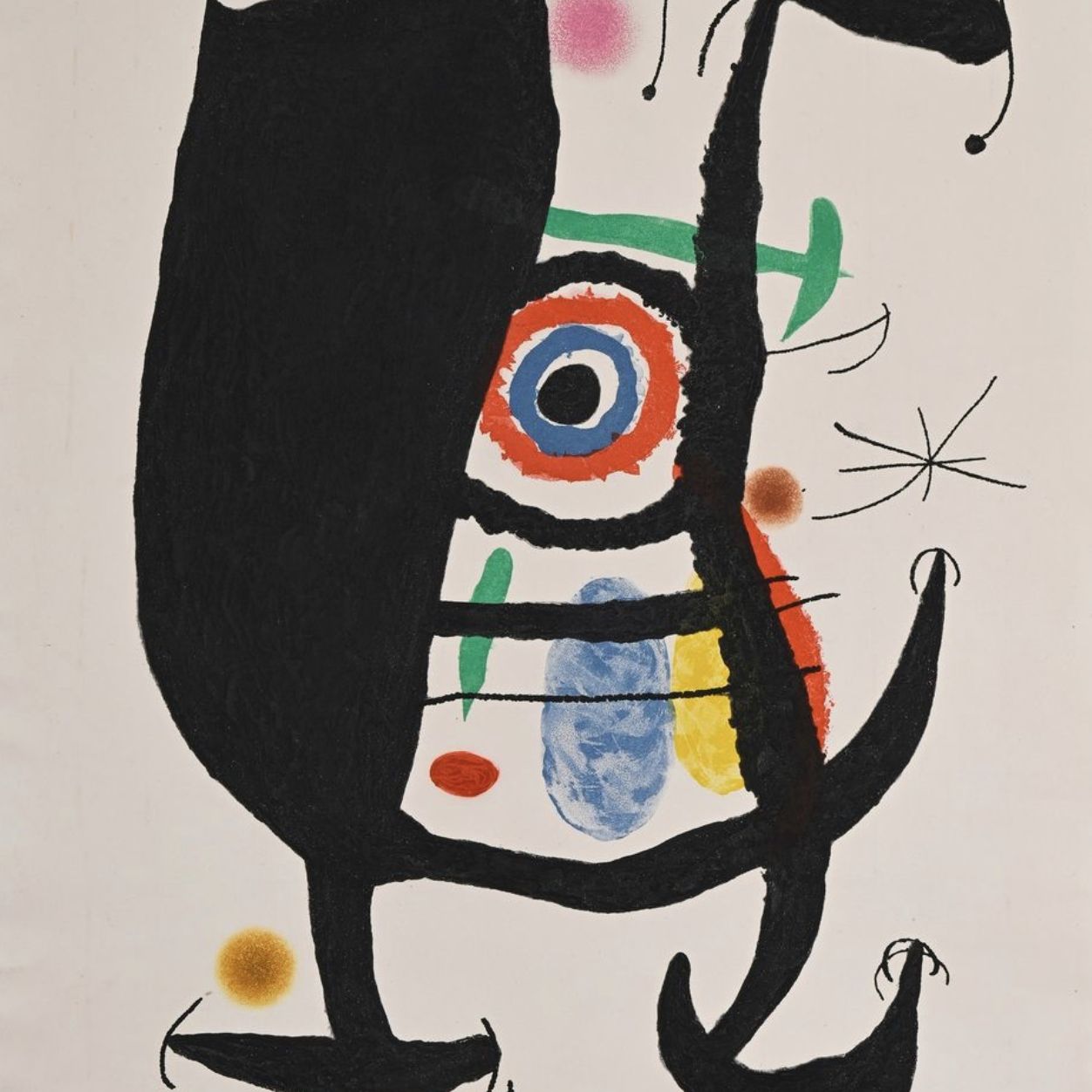
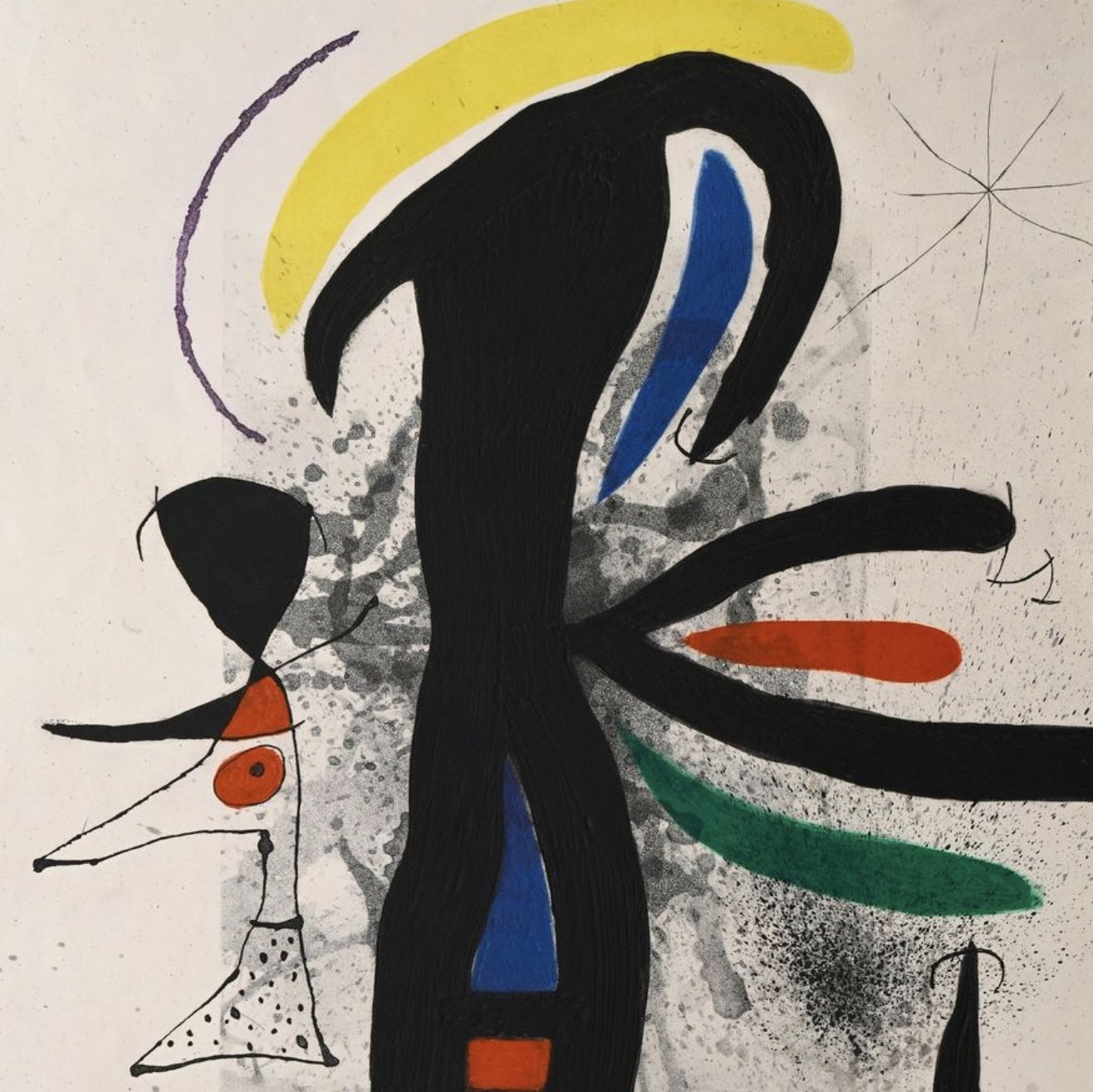
Focus on Ceci est la couleur de mes rêves, Joan Miro, 1967
Ceci est la couleur de mes rêves (This is the color of my dreams), created in 1967, is one of the most surrealist works, far removed from Joan Miro's artistic vein.
This minimalist painting is characterized by a restrained palette, composed solely of white, blue and black, which accentuates the power of contrasts and the depth of emotions.
The blue spot at the center of the canvas instantly draws the eye, evoking both the fluidity and intensity of dreams, like an open window on the unconscious.
The inscription "Ceci est la couleur de mes rêves" (This is the color of my dreams) at the bottom of the canvas invites us to reflect on the subjectivity of personal experience. Miró urges us to consider that color, far from being merely aesthetic, also serves as a vehicle for emotions and associations.
This approach echoes the ideas of Surrealist poets such as André Breton, who advocated the exploration of the unconscious and mental images. Blue, often associated with tranquility and depth, here becomes a symbol of the artist's inner quest.
The word "photo" at the top of the work is a commentary on the very nature of art and reality. Drawing inspiration from photography, Miró highlights the tension between representation and interpretation, questioning our perception of reality through the prism of our dreams and imagination.
This dialectic between the real and the imaginary is also echoed in the reflections of writers like Paul Valéry, who examine the limits of art and perception.
Artistically, Miró embarked on a process of simplification, a return to the essential that echoes lyrical abstraction. The reduction of the palette to three colors, and the emphasis on stripped-down forms, reveal a search for purity and sincerity of expression.
In this sense, Ceci est la couleur de mes rêves is a deeply introspective work, a manifesto for artistic freedom and the universality of human experience.
In this way, Miró invites us to consider dreams not only as escapes, but also as sources of inspiration and truth.
The artist's imprint on his period
Joan Miro was a pioneer in the exploration of Surrealist themes, which he developed in his own artistic vein, creating his own iconographic language.
The production of lithographs enabled him to distribute his work widely, all over the world and at relatively affordable prices, while ensuring the authenticity of the prints. Today, almost 30,000 of the artist's lithographs are sold on the auction market.
His signature
Not all Joan Miro's works are signed.
Although there are variations, here is a first example of its signature:

Appraising your property
If you own a work by Joan Miro, don't hesitate to request a free appraisal by filling in our online form.
A member of our team of experts and certified auctioneers will contact you to provide an estimate of the market value of your work.
If you are considering selling your work, our specialists will also guide you through the various alternatives available to obtain the best possible price, taking into account market trends and the specific features of each work.
Response in less than 24h
Related topics
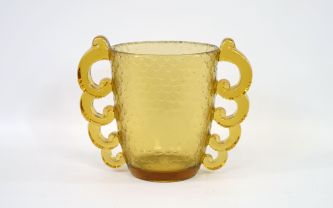
Estimate, quotation of works, pâte de verre vases, D vase...
Daum produces glassware in series, and has brought glass paste back into fashion. Daum's market value is stable. Estimation in 24h.
Read more >

Rating and value of works, drawings, paintings by Joseph Sim...
Joseph Sima was a 20th-century Czech surrealist painter who produced drawings and oils on canvas that are highly prized and sought-after at auction.
Read more >
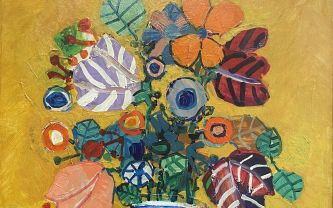
Rating and value of paintings by Paul Aïzp...
Paul Aïzpiri is a painter of the Paris School who has produced paintings and works of considerable value at auction.
Read more >
Secure site, anonymity preserved
State-approved auctioneer and expert
Free, certified estimates
